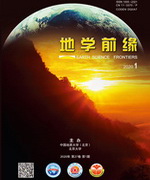The ore-forming geodynamics, geochemical background, diagenesis, and mineralization mechanism of the porphyry molybdenum deposit in the East Qinling-Dabie molybdenum metallogenic belt have attracted the attention of researchers, but some mineralization problems still need to be addressed. In particular, the composition, formation, and evolution of the ore-forming system of the super-large molybdenum deposits need to be systematically summarized. Based on the theory on metallogenic systems of academician Zhai Yusheng, this paper selects the representative Shapinggou porphyry molybdenum deposit as the research object, and summarizes its geological characteristics on the basis of previous research results and the author’s preliminary work. The composition of the ore-forming system is analyzed and the distinguishing features of the system are identified through comparative research. The Shapinggou molybdenum deposit formed in the intracontinental extensional environment and is the product of the large-scale magmatic-mineralization events of the Mesozoic in Eastern China. Its ore-bearing porphyry originated from the ancient lower crust+Dabie complex+lithospheric mantle.Molybdenum mainly originated from the ancient lower crust+Dabie complex. Magma evolution and hydrothermal activity lasted approximately 24 Ma, forming a spherical giant porphyry molybdenum ore-forming system with a diameter of approximately 3 km.Ore-forming fluids have experienced early high temperature, medium salinity, higher oxygen fugacity, low alkalinity, low pH, low density, medium-term high temperature-medium temperature, low salinity-high salinity coexistence, low density-high density coexistence, low oxygen fugacity, rich CO2, evolution to late low temperature, low salinity, poor CO2, higher oxygen fugacity, higher alkalinity, higher pH, and higher density, including Cl.The precipitation of Mo due to phase separation caused by temperature, oxygen fugacity, and fluid boiling resulted in the formation of a large amount of molybdenum metal. Compared with the main porphyry molybdenum ore-forming systems in China and abroad, the metallogenic system of the Shapinggou molybdenum deposit has distinctive mineralization characteristics such as a single ore body, giant system, congenital rich, long gestation, multiple sources, high evolution, multiple periods, super-enrichment, etc. Applying the theory on metallogenic systems, we will continue to study the metallogenic and ore-forming processes of this super-large, high-grade porphyry molybdenum deposit to determine the genesis of the porphyry molybdenum deposits as well as search for similar deposits, both of which are of great significance.

